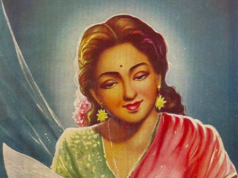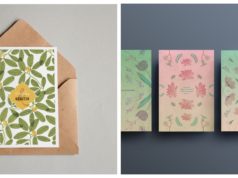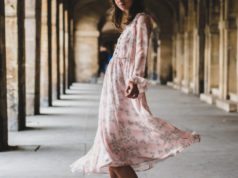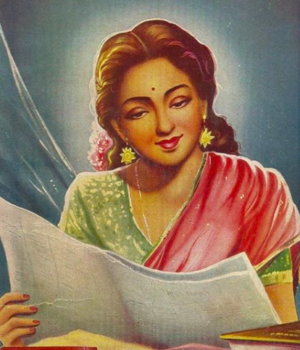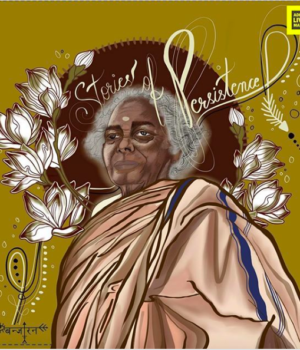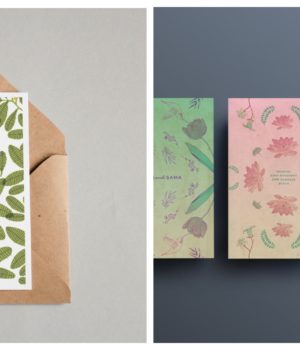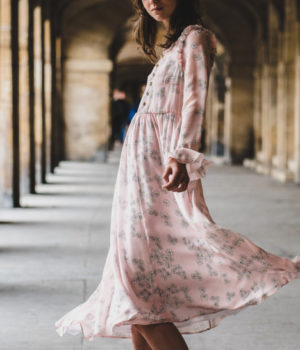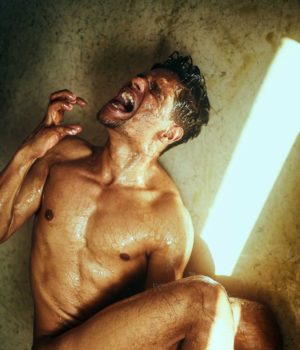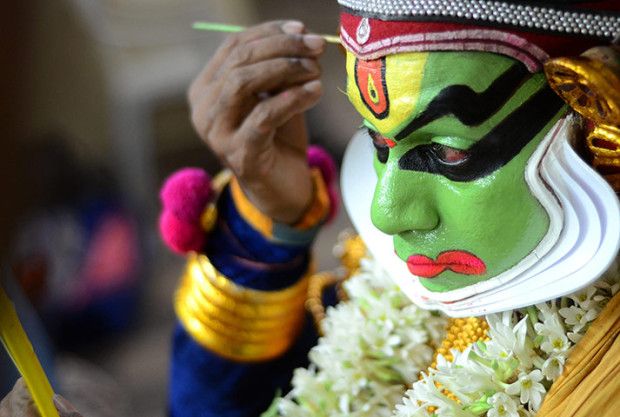
Known for its flamboyant costumes, colossal headgears and dramatic make-up or Chutti, Kathakali is one of the ancient drama traditions in India. Laden with a mesmerizing air throughout its demeanor, the Chutti is the most striking facet of the artform in terms of its aesthetics and doctrines. Intricate patterns, impeccable eye make-up and false moustaches and beards juxtaposed over a main principle colour, are the salient elements in the face do.
Kathakali primarily employs five major colours – green, red, black white and yellow, and they typically symbolize specific emotions wherein green denotes Sringara or romance, red implies Roudra or rage, black suggests Bhayanaka or fear, white stands for Shanta or peace and yellow signifies Adbhuta or wonder. The inherent warmth and coolness of these shades and the stimulus prompted in the human brain to latently create an instant association on seeing these colours, are wisely inculcated in Kathakali.
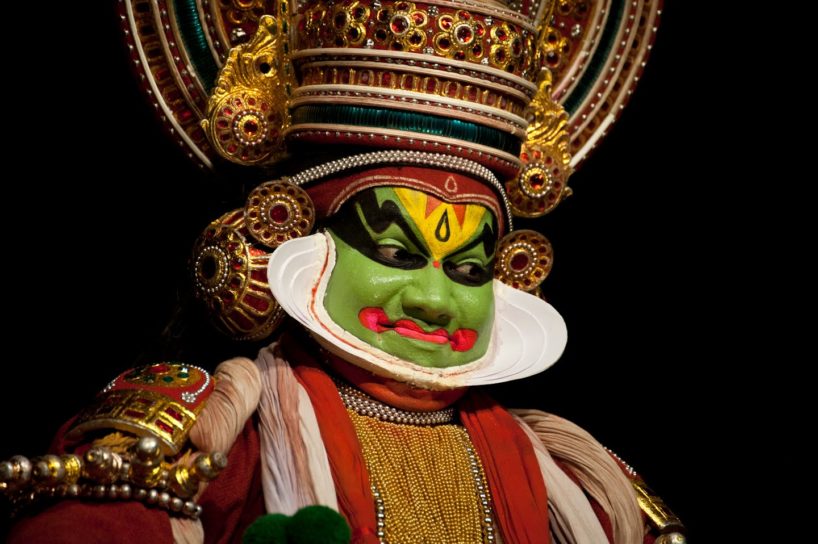
The righteous and dignified characters are in Pacha or green where the face up to the cheekbones is coloured in a light green paste and the black outline around the eyes are elongated akin to the petals of the lotus. A white pigment is used on the forehead, the designs of which vary depending on the character. To denote an enlarged and poised face, cutouts of white paper are fixed along the jaw line. When a character transforms into the Roudra or rage mode, a large black moustache is drawn along the upper lip to accentuate the fierceness.
The proud and belligerent characters such as kings and emperors belong to the Kathi type wherein the basic green layer is broken with patches of red. An oval red and white design is made on the nose and on the upper cheek for these characters. An upturned moustache is common and a white blob of pith is attached to the nose, which renders an enigmatic demeanor to the form.
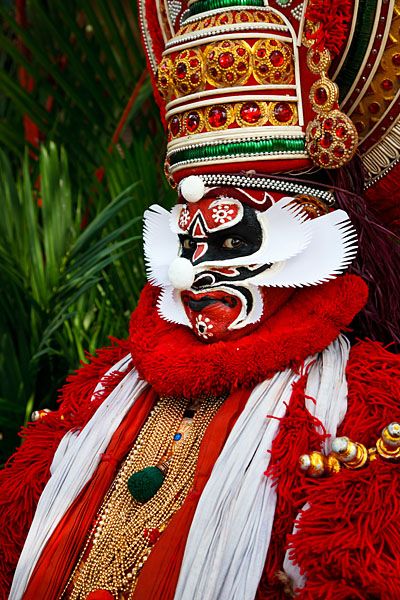
Demonic characters also wear a pair of fangs, which protrude out of the corners of the mouth and further enhance their viciousness. The bearded type of characters are known as Thaadi and are of three varieties – the excessively evil and demonic are known as Chuvanna Thaadi or red beard, the mythical and marvelous beings like the monkey gods are known as Vellathaadi or white beard and the primitive beings such as forest dwellers and hunters are categorized under Karuthathaadi or black beard.
A Chuvannathaadi character has a square patch of black collyrium giving them a frightening look. The white paste is not applied along the natural contours of the jawbone and the paper cutouts are also square and put out from the line of the nose horizontally on either side of the face. This together with the elongation of the chin by a flat false beard, gives these characters a very ominous appearance. There are also two fangs protruding from the lips.
The principle colour for Karuthathaadi or black beard is black and they have intricate patterns drawn in white and red on them. For Vellathaadi characters, the predominant shade is white and is used in the portrayal of more benign personas such as Hanuman.
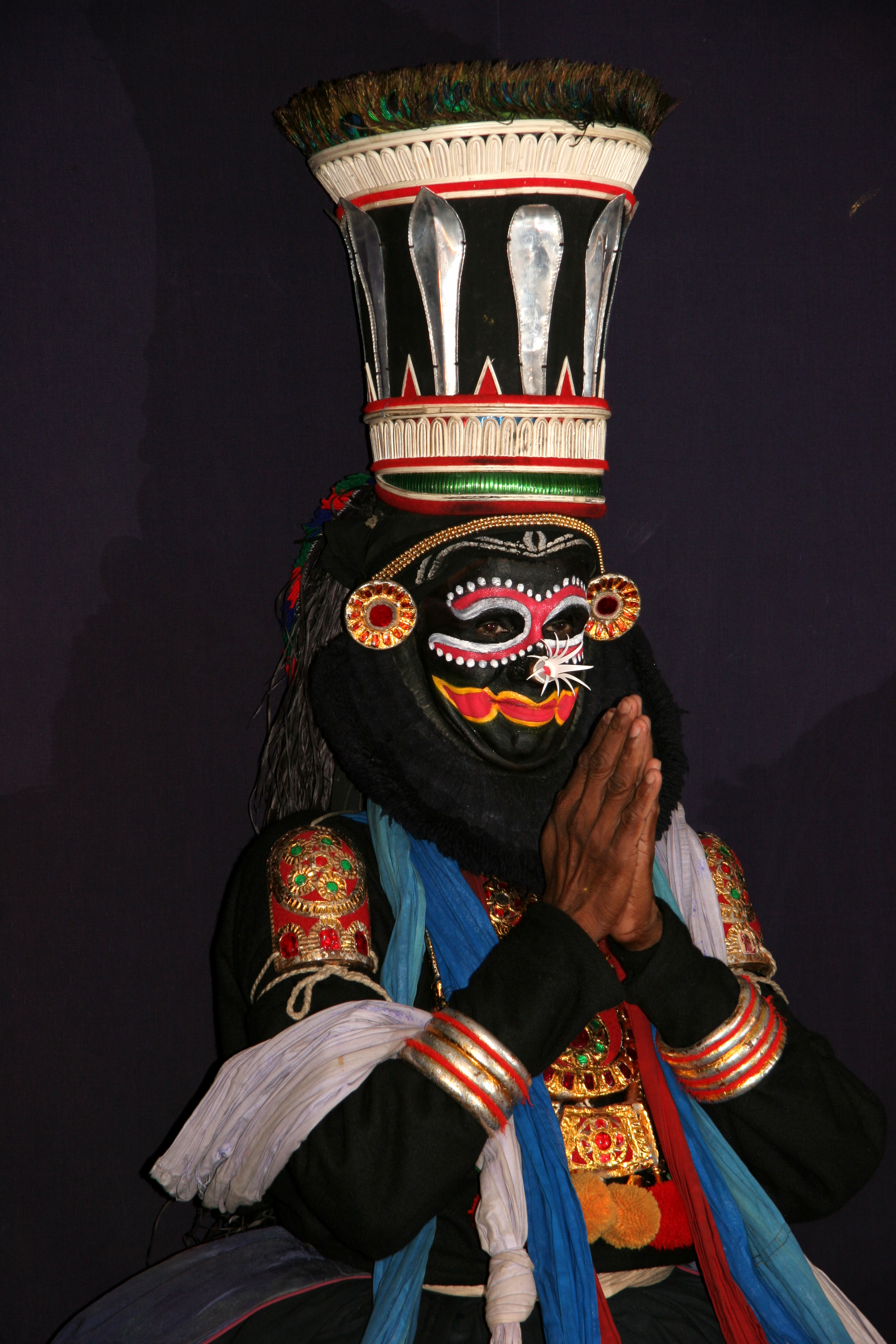
The most gruesome figures are classified as Kari or black and have pitch black on their faces with red on cheek-bones and the eyes elongated with black.
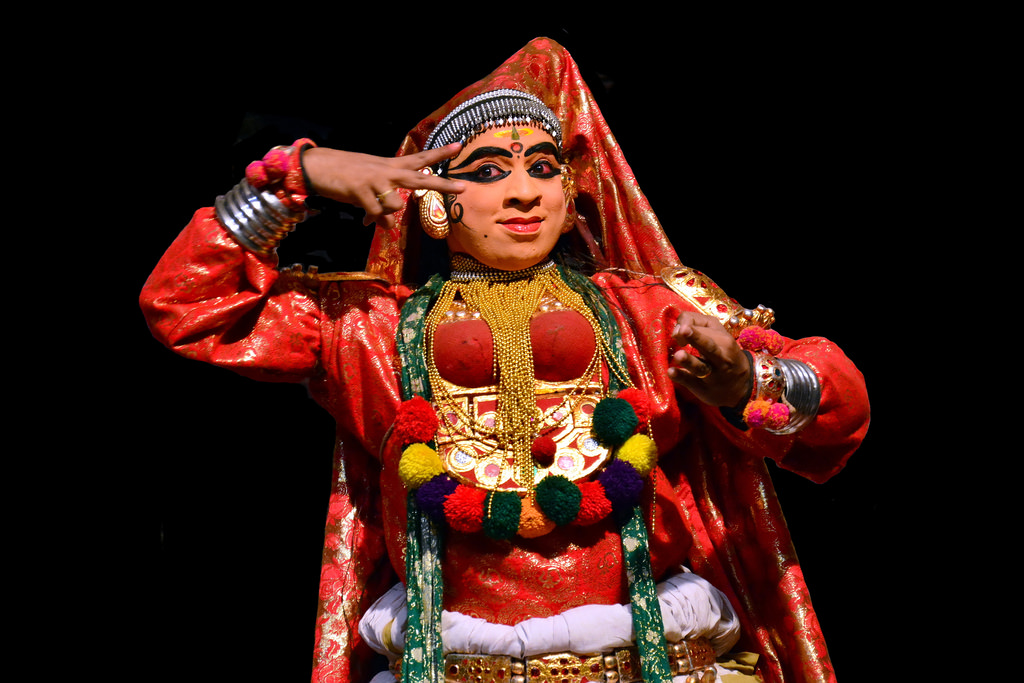
The gentle and spiritually leaning characters like those of women, sages, Brahmins and so on, come under the type known as Minukku or polished for whom golden yellow and pink are the mostly used colours. The women characters have their eyes and brows well elongated to lend them more grace, refinement and delicacy.
Apart from these five main classifications, there are several special characters like Jatayu, Hamsam and Karkotaka known as Teppu whose make-up cannot be fitted into any particular category. The characters of Lord Shiva and Balarama are termed as Pazhukka wherein the principle colour is a mix of yellow and red, rendering a shade with a pinkish undertone.
The facial painting of Kathakali for certain characters are not constrained within a specific framework but are susceptible to variations and alterations in terms of the patterns, motifs and colours depending on the aesthetics of the artist. Also, the makeup is altered to suit the various temperaments of the same character in different story enactments.
Lord Shiva is primarily a Pazhukka character but in the myth of Kiratham, he adorns a black costume with a heavy black beard, a paper flower at the nose tip, rendering a daunting mien.

The Bhadrakali character is one categorized under Teppu and is akin to that of Kari but with a face completely pock-marked with white spots, an ingenuous fake tongue and a gruesome row of upper teeth. Fangs are painted on either side of the mouth to add to the severity. The grotesque demeanor of the form goes well with the character the artist portrays.
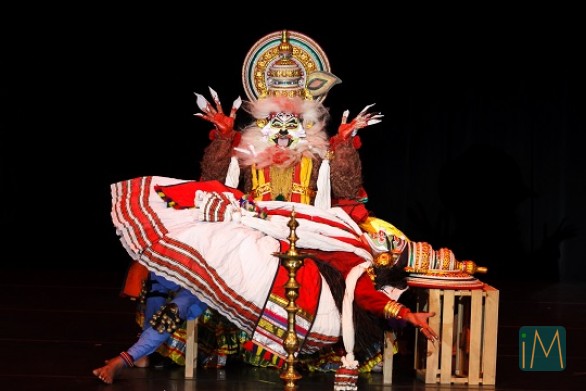
The character of Narasimha is a ferocious one and a befitting makeup is devised for the man-lion incarnation with a dominant yellow shade alongside patches of red and black, akin to that of a lion. There is also a false moustache attached. The Jatayu and Hamsa are bird-like characters wherein Jatayu has black as its principle shade and Hamsa has yellow. Both of them have a beak attached over their mouth.
Karkodaka or the serpent has a face do majorly in black and yellow circles and vivacious patterns portraying the diabolic and ferine traits.
Another interesting character is Bheeru or the coward, who is an imbecile personality with an unruly make up pattern comprising of various colours. The intent is to portray Bheeru at his utmost comical self and hence the conventional ideologies of a Kathakali Chutti is redesigned with probably only one earring, or an earring being replaced by some other accessory or even an anklet on the neck instead of a typical neckpiece.
The colours on a character go beyond the purpose of covering the face, mystically transforming the artist into the character he is embodying, and slight additions and variations in them delivers a world of difference in the portrayal, which is evident to the trained eye.
Written by Aparna Kochumon

